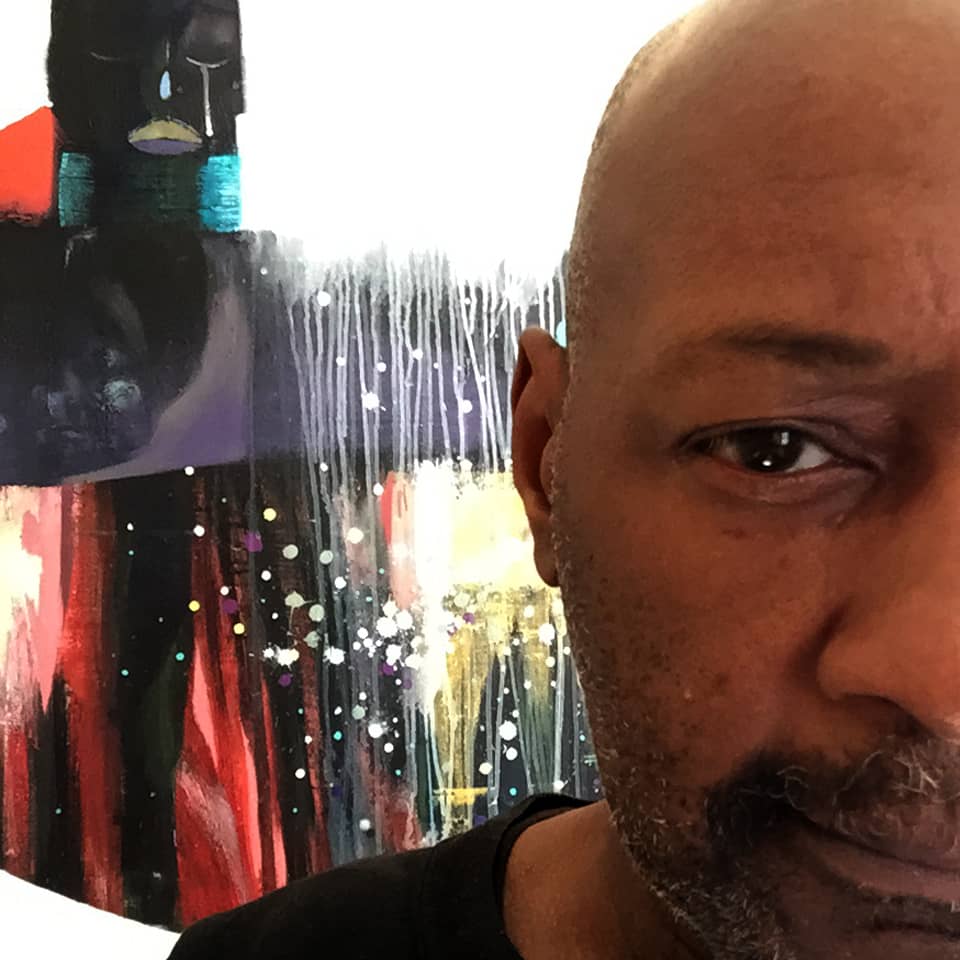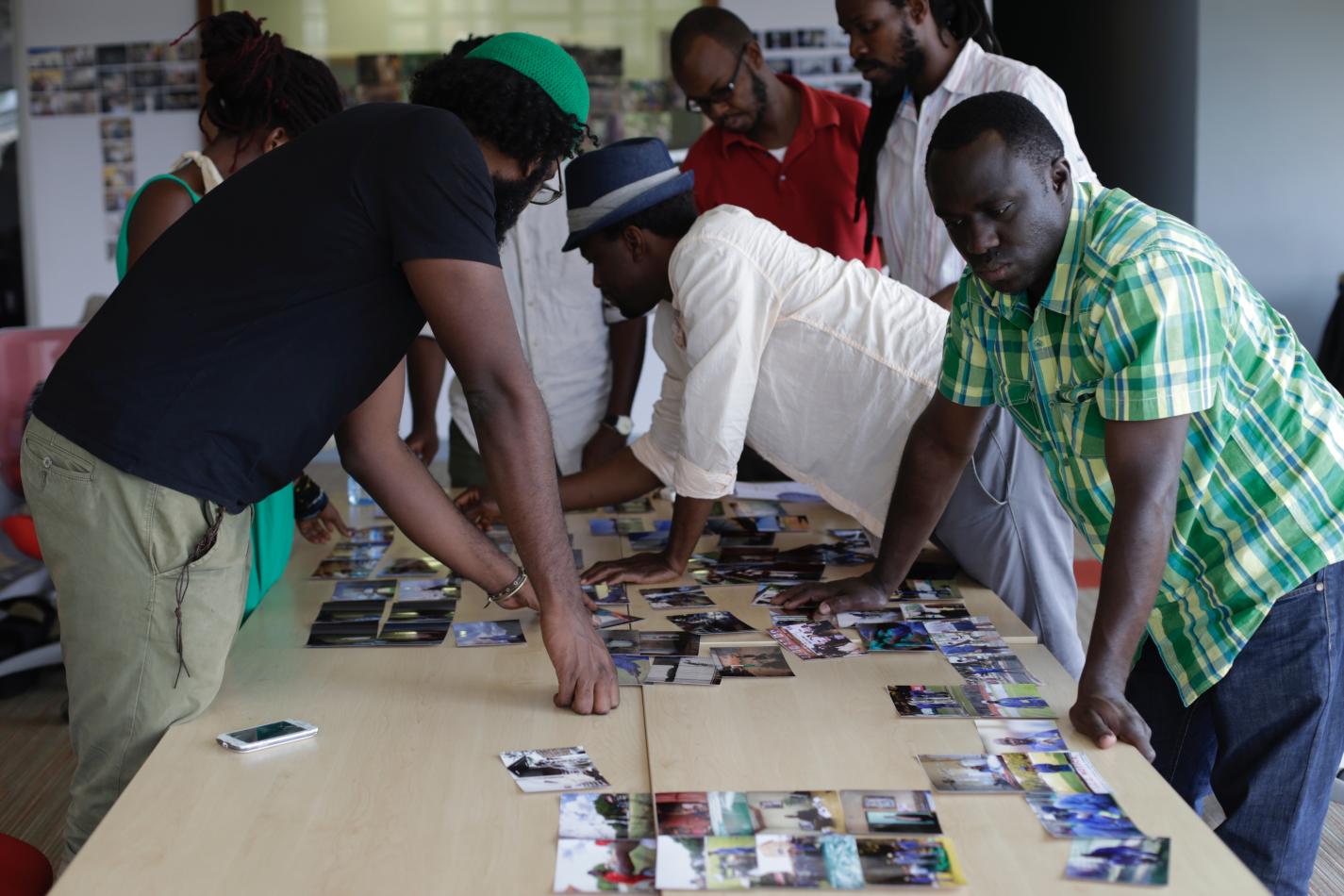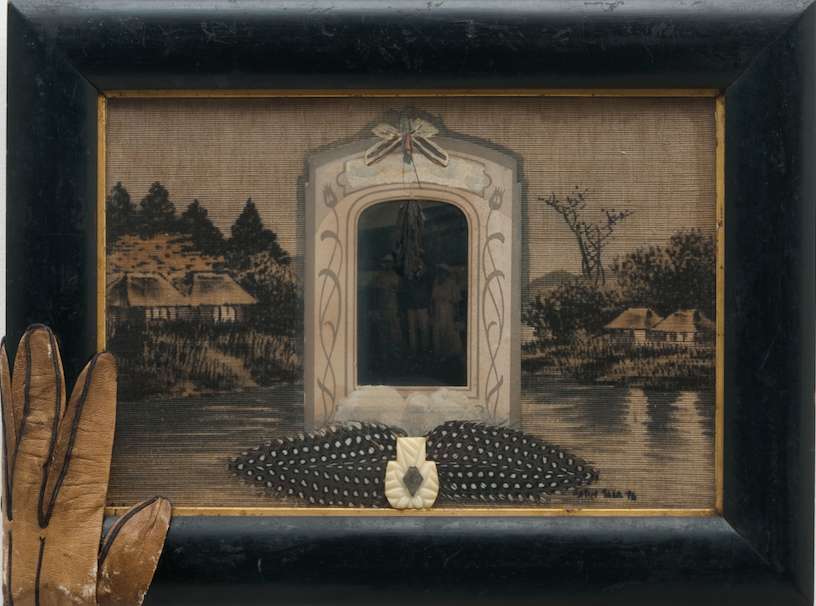Al Johnson has created in some form or another for over 20 years. Mr. Johnson’s work is in high demand by collectors all over the globe and has been everywhere from Tokyo to the hands of First Lady Michelle Obama. His résumé also includes film and fine art. Al’s abstract paintings are a personal favorite of mine. His use of color is exciting and his composition spot on (we’ll touch on that later). I’ve noticed that like many in his generation of artists, he is experimental and open to new prospects, materials, and methods to create art. While I didn’t get to visit his Philadelphia studio, we spoke about pieces from his extensive body of work and how he grew to where he is now.
Melissa Hunter Davis: Tell me about your art practice?
Al Johnson: Most days, I identify myself as a mixed media artist. If I’m not drawing, I’m painting. If I’m not painting, I’m drawing. I’m always wrapped up in the creative mode. From time to time, I get calls from art collectors, who were referred to me by someone who purchased one of my paintings. Depending upon each situation I can create a mixed media piece that is reflective of my current mood and energy.
MHD: I read your bio, and you have a great background, and you’ve studied at some skilled people and important institutions with Pratt being one of them. What inspired you to go to school to study art?
AJ: My first indication that art was something that I could do starting at the age of eight. I got hit by a car on my way to school and was in the hospital for about 11 days. During that time, a nurse gave me a clipboard chart because she noticed that I liked to doodle. Before I started painting, I just doodled.
All of a sudden the nurses were putting my work up on the walls. When my mom visited, she noticed the nurses were very involved in what I was doing. They said, “He’s great, you should see these drawings!”
My first art teacher put me in a program for young artists which gave me an opportunity to enter a poster contest that included an exhibition at the Whitney Museum in New York.
One of the judges on that panel was Romare Bearden. While at the exhibition with my mom, Romare Bearden told her, “That young man has an ability to compose. He is not just an artist. He is a composer. Some artists can just draw, but he has the idea on how to compose.” After that encounter, my mom was constantly reminding me that I am more than an artist, I am a composer. This is how my career began.
During the ’90s I became one of the busiest illustrators in New York. My studio was located on Hubert Street, which was six blocks from the World Trade Center. I shared this space with another artist by the name of Colin Pennock. We were both doing exceptionally well as storyboard artists. When a video or a feature film was shot in New York, most directors would want a storyboard artist to be on set to draw scenes for the film or video. Our sketches were the visuals that the production crew and talent used for shooting. I specialized mostly in car chases and explosions.
Then came 9/11. When 9/11 happened, we were not in our studio that day – thank God. Colin had been there the prior weekend and left the studio windows open. It took three months before we could even get into the area because of the major cleanup that was going on in all four directions from the studio. By the time we were able to gain access to our studio and assess the damage, we discovered a quarter-inch of dust on all surfaces. The 9/11 disaster hurt our ability to do work for clients because film production shut down. No car explosions, no shooting up chase scenes.
It took close to two years before the storyboard work started to crank up. During those two years, I got heavily back into painting. I told myself I was going to take my paintings out there and sell them, and I’m going to do the storyboards, too. It’s been this way for almost 20 years – doing this juggling act between two realms, doing commercial work and doing fine art work.
MHD: Let’s discuss your fine art. I can’t visit your studio, but we can look at your work. Can we discuss this painting?
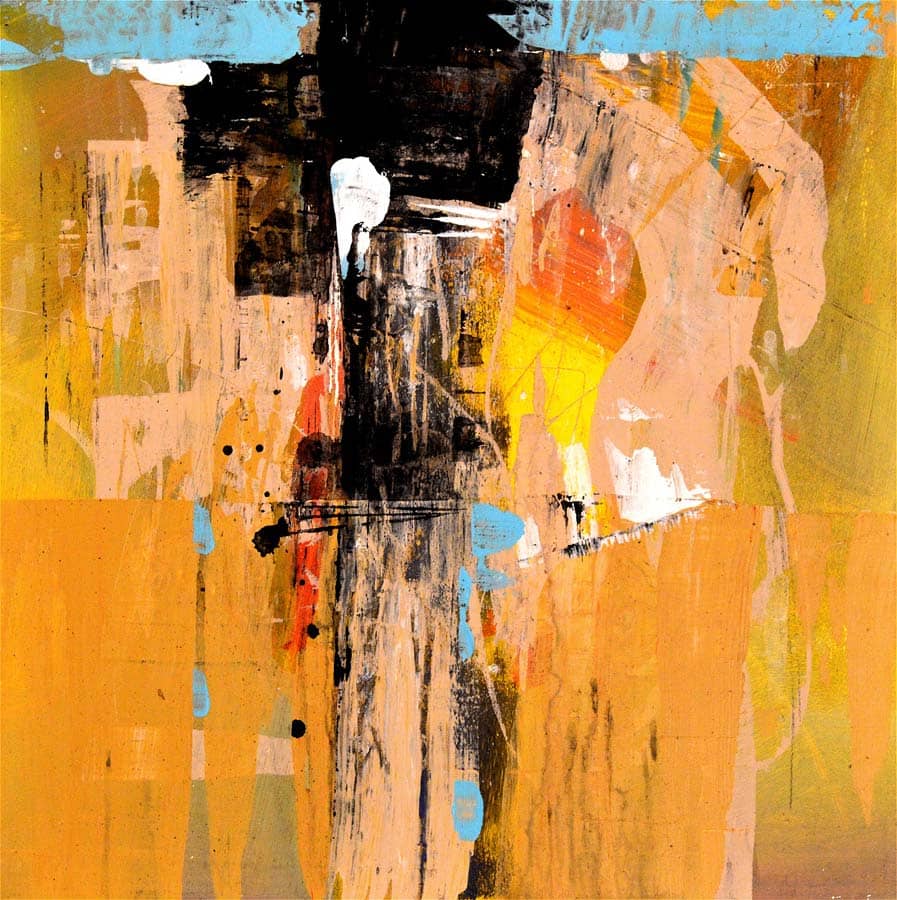
Above: Early Wisdom by Al Johnson
AJ: Early Wisdom is an essay that I’ve been working writing. I’ve been inside of recovery now for eleven years, two months, and I don’t know how many days yet. I was a very social person with drinking. When I drank, I always had fun. It was the part about realizing that I needed to learn how to forgive myself before I asked anybody else to forgive me. Learning how to forgive others is to understand that we’re all children.
This series that I’ve been working on which has to do with forgiveness began with this piece which I call “Early Wisdom” because even children have a way of forgiving. They have a much quicker way of forgiving than we do. All right, so they might need some candy or something, but still, it’s a start, you know what I mean? That’s what that series is all about. There are about I believe it’s five or six and this was number one. Early Wisdom.
MH: So the next image caught my eye because of the woman in the painting. You said you might have changed the name of this one so when I found it, it was Art Odyssey.
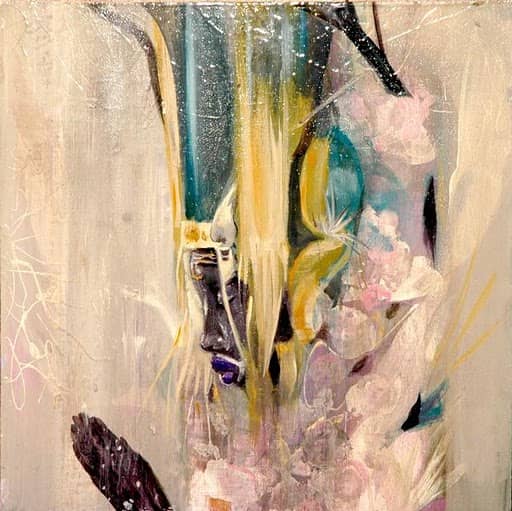
AJ: This is where I’m questioning the moves and the methods of spirituality. It starts with having faith in something. It doesn’t necessarily have to do with any one particular belief system. It just means that you have one, that I’m building one. The approach is a little decorative, but I wanted to bring in my culture, my African heritage. I just think that the people of color, we’re more earthbound when we’re reaching towards the spiritual. This was kind of, I call it like my hologram move where it’s like it’s fantasy, but it’s also decorative.
My objective is to create art that promotes an interest in what the viewer is getting. If you’re an artist and people are not asking you questions about what they see, and you’re creating artwork that does not create conversation, there is something that you’re not doing right. Part of my drive is to create art that creates conversation because that’s what brings people together.
MHD: What’s next for you? Are you looking at new pieces, new materials?
AJ: Basically, I have a pretty extensive background in the house music industry, in the house music scene. Currently, there are so many things in so many realms I can go. I was in France. The Europeans they have a way of things; they just know the right stuff, man. First, I’m working with a film crew in Sweden, in Stockholm. In the hotel I’m staying at in Stockholm, all of the commercials had house music. I go to the restaurants, in the hotel, in the lobby, they’re playing house music. I’m like, this is trippy.
Then, there was my experience with doing the residency in the south of France. They have this big concert that they do every year and it involves five of the top world DJ’s. They’re talking about something like twenty to thirty thousand people will be in this small area, and they’re going to have this DJ up in this tower projecting these images of my paintings on the side of a boat. To have these kinds of experiences, where does an artist make his impact here? How does this help sell my artwork? I don’t know. I don’t know. I just know that I’m grateful to be part of something that is the future and is now.







